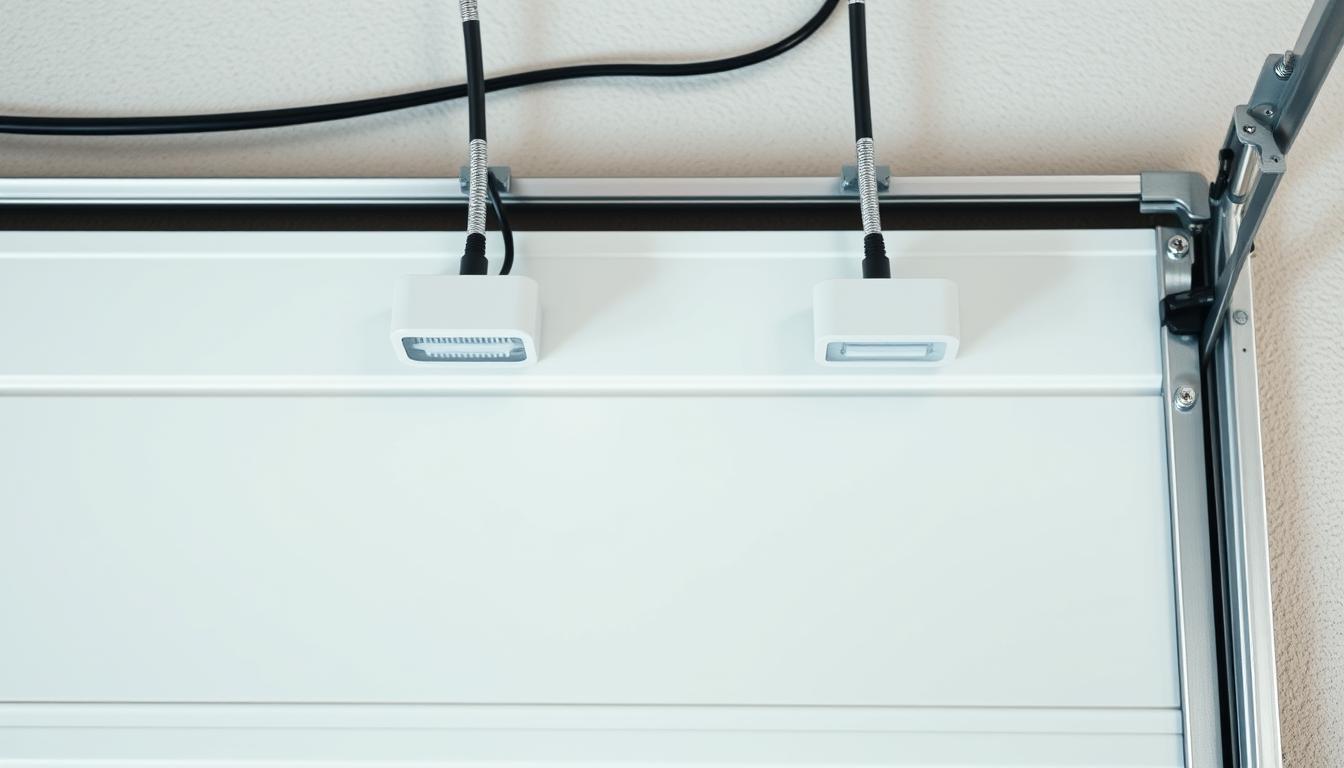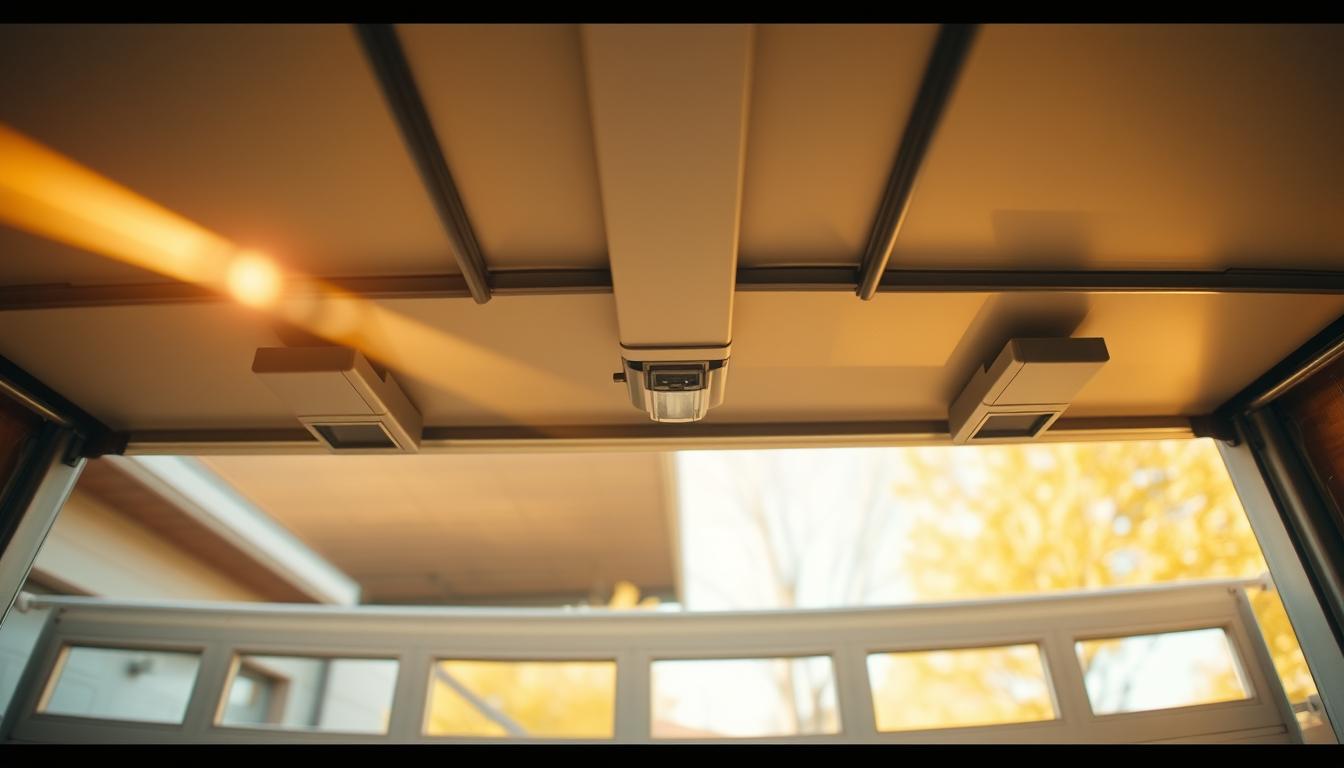Ever wondered why your automatic roller stops before crushing something? Those little devices near the base are safety heroes. Since their invention in 1985, these components have saved countless fingers and pets by detecting obstructions. But here’s the big question: will they work with any setup, or do you need specific models?
Modern versions of garage door sensors are smarter and more reliable than ever. Early designs were clunky, but today’s tech uses infrared beams and quick-response mechanisms. They’re now a standard part of most garage doors systems, making accidental closures rare. But compatibility isn’t always straightforward. Brand differences, wiring setups, and mounting styles can affect whether they’ll slot into your existing garage door opener gear.
Think about your own garage door setup. Have you tried mixing parts from different brands? Does your current door sensor pair sometimes misbehave? We’ll break down what makes some sensors work across multiple garage door openers systems while others need exact matches. Stick around – you might save time (and cash) on your next garage door repair upgrade!
Key Takeaways
- Safety components prevent doors from closing on objects or people.
- Compatibility depends on brand, wiring, and mounting design.
- Technology has improved significantly since the 1980s.
- Modern versions are easier to install and maintain.
- Always check specifications before replacing parts.
Understanding Garage Door Sensors and Their Safety Role
Picture this: Your rollup door halts mid-close, saving your bike from getting squashed. That’s sensor tech in action. These devices have come a long way since their early days, transforming how we protect our homes and loved ones.
The Evolution and Importance of Sensors
Back in the 1980s, early versions used basic light beams that often failed in bright sunlight. Modern infrared systems, introduced in the 1990s, changed everything. They’re now sensitive enough to spot a shoelace yet tough enough for Aussie weather. Remember struggling with alignment issues? Newer models self-calibrate, cutting setup time in half.
How Sensors Ensure Door Safety
Here’s how it works: One unit sends an invisible beam to its partner across the doorway. Break that connection, and the mechanism reverses instantly. Wireless options eliminate messy cables but need battery checks. Wired types offer reliability but require professional garage door installation.
Ever noticed how your system reacts when a leaf blows through? That’s precision engineering at work. While older setups needed monthly tweaks, today’s designs stay accurate for years. Whether you’re upgrading or troubleshooting, understanding these safety essentials helps keep your household secure.
Are Garage Door Sensors Universal
Have you ever bought a “universal” component only to realise it doesn’t fit your setup? Many safety devices claim broad compatibility, but reality often proves trickier. While some models work across multiple brands, others demand exact matches due to proprietary designs.

Universal Claims vs. Manufacturer-Specific Requirements
Big brands like LiftMaster and Chamberlain often design their safety sensor tech to pair exclusively with their own garage door openers. A neighbour once tried using generic sensors on their B&D opener – constant misalignment issues forced a switch to brand-specific parts. Third-party options (Genie, Merlin) sometimes bridge gaps, but always verify voltage ratings and wiring specs before purchasing.
Impact of Sensor Type on Compatibility
Infrared systems dominate modern garage door setups, but older mechanical types still exist. If your door opener uses encrypted signals or rolling codes, mismatched pairs won’t communicate properly. Beam alignment also matters – a friend’s DIY fix failed because their aftermarket garage door sensors couldn’t maintain the required 15cm spacing.
Need to replace components? Check manuals or manufacturer sites first. Local repair pros often carry cross-compatible kits for common garage door openers. While universal claims sound convenient, your system’s unique needs should guide decisions. After all, garage door safety isn’t a guessing game!
Compatibility with Various Garage Door Openers
Stuck deciding between cutting cords or keeping wires? Modern safety tech offers both options, but each choice affects how well components work with your existing setup. Let’s unpack what works best for different systems.
Wireless Versus Wired Solutions
Wireless models shine for quick setups – no drilling holes or threading cables. A mate in Brisbane upgraded his 90s roller in minutes using battery-powered units. But remember: signals can drop during storms, and forgetting battery changes might leave you stranded.
Hardwired versions never skip a beat. They’re ideal for homes with metal structures that block radio waves. One tradie shared how a client’s steel-framed shed only worked with direct-wired sensors. Downside? You’ll need professional help for clean installation.
Integration With Smart Home Systems
Newer garage door openers now chat with Google Home and Alexa. Imagine getting phone alerts when kids arrive home or checking if you left the entry open while at the beach. Brands like Chamberlain offer app-controlled garage door sensors that pair with IFTTT routines.
But not all systems speak the same language. Before buying smart-enabled units, check if they support Zigbee or Z-Wave protocols. A neighbour learned this the hard way when her fancy new sensors refused to link with her existing hub.
- Wireless pros: Easy DIY setup, portable for renters
- Wired pros: Uninterrupted operation, better for complex builds
- Smart features: Remote access, custom automations
Whether you’re retrofitting an old workhorse or building a connected home, alignment remains key. Even the fanciest tech fails if the beam’s off by a pinky width. Measure twice, install once!
Installation and Troubleshooting of Garage Door Sensors
Struggling to get your safety system working smoothly? Let’s walk through setting it up properly. Whether you’re a DIY enthusiast or prefer calling a tradie, these tips will save you headaches down the track.

Step-by-Step Installation Process
First, grab your tools: a drill, screwdriver, and spirit level. Mount the sending unit on one side of the entryway, 15cm above the ground. Fix the receiver directly opposite – even a slight angle can break the beam. Use the level to ensure both units sit perfectly straight.
Next, connect the wires to your opener’s terminals. Match the colours (usually white and white-striped) to avoid reversed polarity. Test the system by closing the entry – it should reverse immediately if the beam’s interrupted. A mate in Perth spent hours troubleshooting only to find swapped wires!
| Issue | Quick Fix | When to Call a Pro |
|---|---|---|
| Flickering lights | Check power supply | Burnt-out circuits |
| False triggers | Clean lens with microfiber | Damaged components |
| No response | Realign brackets | Faulty opener link |
Adjusting Sensor Sensitivity and Alignment
Too many false alarms? Try rotating the units inward by 2-3 degrees. This narrows the beam’s path, reducing interference from passing insects or debris. For older models, tweak the sensitivity screw clockwise until the indicator light stays steady.
Remember that Sydney storm last summer? Dust and moisture can cloud the lenses. Wipe them monthly with a soft cloth – never use harsh chemicals. If problems persist after cleaning, swap the batteries or test the wiring with a multimeter.
Pro tip: Place a broomstick in the entry path during adjustments. If the mechanism doesn’t reverse, your alignment’s still off. Still stuck? Local experts like Jim’s Safety Checks offer same-day servicing across most Aussie suburbs.
Factors to Consider When Choosing and Replacing Sensors
Picking the right components for your home? It’s simpler than you think. Modern safety sensor tech adapts to various setups, but a few key factors ensure smooth operation for years. Let’s explore what really matters when upgrading or swapping parts of your garage door safety system.
Sensor Range and Environmental Considerations
Ever noticed your entry reversing unexpectedly on windy days? That’s why beam reach matters. Units should cover the full entry path without reacting to passing debris. For homes in gusty areas like Adelaide, opt for models with adjustable sensitivity in your door sensors.
Extreme weather tests every component. Sensors in tropical Cairns face constant humidity, while Outback installations battle dust storms. Look for IP65 ratings or higher – these handle rain, dirt, and temperature swings (-20°C to 50°C). A friend in Melbourne learned this after winter fog kept triggering false alarms with her garage door opener!
Weatherproof Capabilities and Durability
Plastic housings crack under harsh UV rays. Metal-reinforced units last longer in direct sunlight. Check for rubber seals around lenses – they prevent moisture buildup that causes corrosion. Sydney tradies often recommend models with rust-proof brackets for coastal garage doors.
Are Garage Door Sensors Universal
| Factor | Ideal Spec | Why It Matters |
|---|---|---|
| Range | 5-7 metres | Prevents beam gaps |
| Weatherproofing | IP65+ rating | Resists rain/dust |
| Durability | UV-stable materials | Survives Aussie sun |
| Compatibility | Voltage match | Works with your door opener |
Dirt buildup? Wipe lenses monthly with a dry cloth. Persistent issues often signal worn-out parts needing replacement. Always match new garage door sensors to your opener’s voltage – mismatched pairs can damage the whole system.
Pro tip: Test beam alignment every 6 months. Place a cardboard box in the entryway – proper function reverses the mechanism instantly. Still unsure? Local experts offer free compatibility checks across most regions for door repair.
Conclusion
Keeping your home secure starts with reliable tech that adapts to your lifestyle. From clunky 80s prototypes to today’s infrared systems, safety devices have become smarter and more user-friendly. But remember – what works for your neighbour’s setup might not suit yours.
Always double-check voltage specs and brand guidelines when swapping parts. Wireless units offer quick fixes for renters, while hardwired models deliver rock-solid performance. A mate in Melbourne saved $300 by matching her opener’s frequency before buying replacements.
Regular maintenance keeps things running smoothly. Wipe lenses monthly to prevent dirt buildup disrupting the beam. Spot flickering lights or odd noises? That’s your cue for professional service. Most Aussie suburbs have local experts who handle repairs in under an hour.
Got a success story about upgrading your system? Share it at the pub or online – your experience might help others dodge costly mistakes. With the right know-how, you’ll keep your household safe without breaking a sweat!

